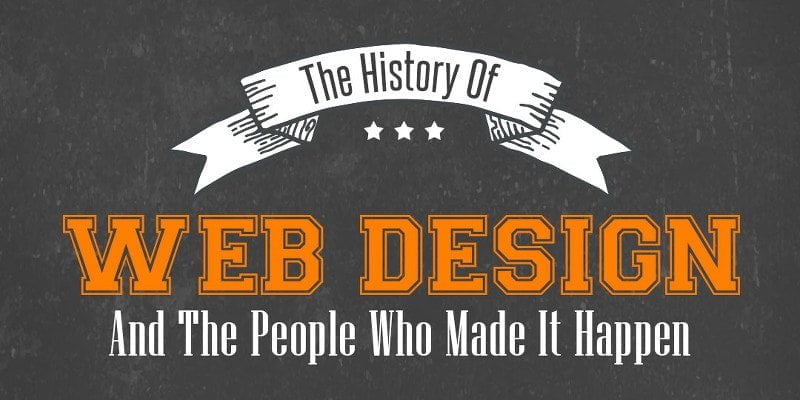The internet is so much a part of people’s lives today that it is hard to believe that the first website was created in 1990. In a little over 25 years websites have evolved from a simple page of static text, to huge interactive websites that include images, videos, and even software programs. This post tracks the evolution of web design, from its roots in the 1990s to the present day.
Web design in the 1990’s
The first HTML website was developed in 1990 by Tim Berners-Lee for sharing technical documents with colleagues. From here the internet rapidly developed, and in 1991 the public were able to access the world wide web.
By 1993 browsers started appearing that were user-friendly, supported images, and included new elements like tables. Websites were becoming more attractive and advertisers started placing adverts on websites. It’s around this time that web design was born as an industry.
In 1994 the Worldwide Web Consortium was established and with it a structured universal code for web design and development.
Towards the end of the 1990’s the internet had grown to include over 2 million websites with 147 million users. Three key technologies were developed:
- Cascading style sheets (css) that make it much easier for designers to theme a website.
- PHP, a programming language that made some of the first dynamic websites possible. Many of today’s websites, including big players like Facebook, are built with php.
- Flash made it easy to build interactive websites that ran in the user’s browser. While its loosing its importance these days, it does have its place in internet history.
The decade closed with the release of the first mobile browser DoCoMo in 1999 by Japanese provider NTT.
Web design in the 2000’s
The noughties saw the rapid growth and development of the internet, but it started with a crash. In 2000 the dot-com bubble burst which led to the loss of over 50% of the dot-com companies. As the dust cleared designers were already working to improve the look of the internet, with clutter free layouts and minimal designs. Content was separated from design, and web 2.0 arrived. Around the same time social media websites started to take off and blogging was born with the launch of WordPress in 2003. 2008 was the year that mobile users outnumbered desktop users browsing the internet. Google also released the first version of the now popular Chrome browser, and open-source development took off.
Website design now
In 2010 the internet reached 2 billion active users and HTML 5 brings better media and semantic integration to the web. The following year, driven by the rise in mobile internet browsing and a frustration with viewing website on small screens, responsive web design was developed. This allowed designed to build websites that could automatically rearrange their content to suit the viewer’s screen size. Since then web development has taken a few more leaps, with beautiful typography now common (thanks to Google fonts), parallax panels and high quality media, and a trend to use white space more effectively. The focus of good web design is now very much on the user experience, with a drive to build intuitive interfaces and media rich websites.
Not bad for 25 years of development, it will be interesting to see where we are in another 25 years.

This infographic was created by Innoppl.
